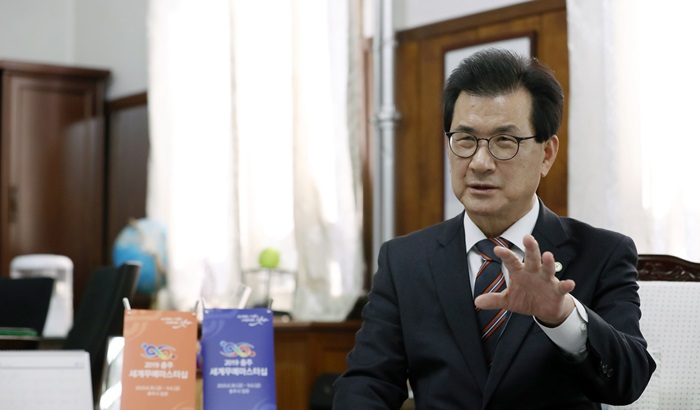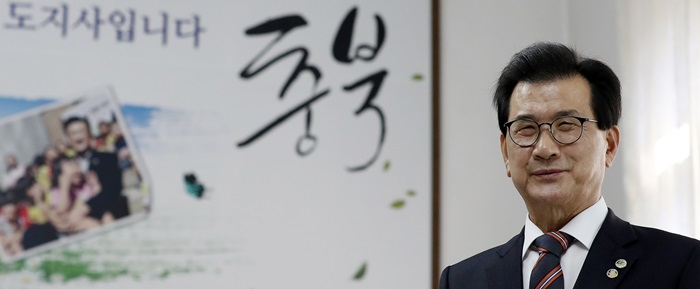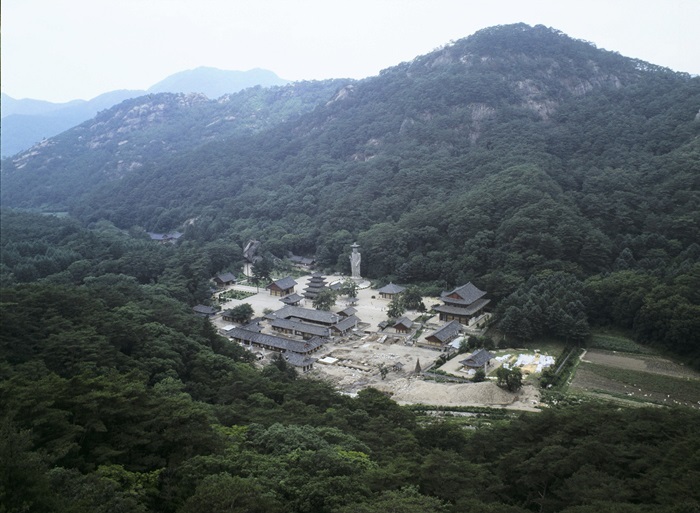[Balanced Development]
Interviewing Regional Leaders | #2. Chungcheongbuk-do Province
Balanced national development is a key challenge in the Korean government's drive to resolve issues such as declining economic growth, social polarization, the low birth rate, and developmental and economic disparity in the provinces.
Last year in February, President Moon Jae-in told a proclamation ceremony for balanced national development, "Based on decentralization, engagement and innovation, (provincial) regions can be the main agent to lead balanced development."
This Korea.net series explores the regions set to benefit from the balanced development campaign.
Last year in February, President Moon Jae-in told a proclamation ceremony for balanced national development, "Based on decentralization, engagement and innovation, (provincial) regions can be the main agent to lead balanced development."
This Korea.net series explores the regions set to benefit from the balanced development campaign.

Chungcheongbuk-do Province Governor Lee Si-jong on March 8 says the so-called Gangho axis, which is designed to connect Gangwon-do Province to the Honam region (comprising Gwangju and the provinces of Jeollanam-do and Jeollabuk-do), will lead the government's drive to achieve balanced national development. (Jeon Han)
By Kim Young Deok and Yoon Sojung
Video = Kim Sunjoo, Choi Taesoon
Cheongju | March 8, 2019
The office of Chungcheongbuk-do Province Governor Lee Si-jong has a big map showing the planned development of the region. The center of the map highlights a white belt indicating a high-speed railway to connect Gangwon-do Province and the Honam region, which encompasses the city of Gwangju and the provinces of Jeollanam-do and Jeollabuk-do.
The governor's desk is surrounded by stacks of papers and smaller maps all related to the province's plan to achieve balanced national development.
When starting to discuss such development, the first thing he mentions is the axis of Gangwon-do and Honam, or "Gangho axis" for short.
He stresses that this project, which his province proposed in 2014, will play a crucial role in achieving the objective of balanced national development.
The following are excerpts from Korea.net's March 8 interview with the governor 8 at his office.
- The central government in January announced a project for balanced national development for this year. What is Chungcheongbuk-do Province's role?
Chungcheongbuk-do Province devised the concept of the Gangho axis, and this concept has been reflected in the government-led campaign for balanced national development.
- Why is the Gangho axis important for balanced national development?
In the past, the Gyeongbu axis spanning the Seoul-to-Busan region was the main focus of Korea's national development. Based on statistics, the Gyeongbu region has four times more population, industrial complexes and businesses than the Gangho region. Considering this gap, we had to come up with the project to alleviate this imbalance.
-What are the specific goals of the Gangho axis project?
This project aims to improve the railway that crosses Chungcheongbuk-do Province from Osong to Jecheon stations so that bullet trains can run as fast as 230 km per hour. The existing Chungcheongbuk-do Line will be transformed into a high-speed one to allow travel between Honam and Gangneung without having to transfer trains.
If the project goes smoothly according to plan, the railway could further stretch from Gangneung to Wonsan, North Korea, and emerge as the axis of inter-Korean peace. If the line is further extended to Vladivostok, Russia, it could reach as far as Europe thanks to the Trans-Siberian Railway. Thus over the long term, the Gangho axis could be the axis of inter-Korean peace. If this happens, the project could result in a dream silk rail on the Eurasian continent.
- When could this project see completion?
The (central) government plans to complete the Gangho axis project by 2026 or 2027. If inter-Korean relations improve, I expect the project to proceed smoothly and the rail to go through North Korea within the next ten years.

Chungcheongbuk-do Province Governor Lee Si-jong on March 8 says the Gangho axis railway could stretch from Gangneung to Wonsan, North Korea, and further up to Vladivostok, Russia. (Jeon Han)
- What other projects has your province been working on for balanced national development?
Our province from Aug. 30 will host the Chungju World Martial Arts Masterships 2019, the Olympics of the martial arts, for eight days. We began hosting this event separately to focus more on martial arts with Asian origins.
As the Olympics is the world's largest sports festival since it began in Athens, I believe the World Martial Arts Masterships can emerge as another Olympics of equal value.
Just as Lausanne, Switzerland, is (the headquarters) of the International Olympic Committee, Chungcheongbuk-do can become the heart of martial arts if we develop this tournament.
- What is the goal of your province?
Our goal is to make a region that moves toward the world and the future.
Chungcheongbuk-do is a place with beautiful mountains and clean water (山紫水明 in Chinese). Our province will become the country's most advanced region within five years.

Chungcheongbuk-do Province Governor Lee Si-jong on March 8 picked the Buddhist temple of Beopjusa as the most beautiful place in his province. (Yonhap News)